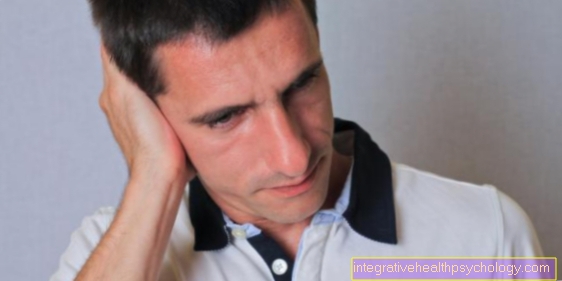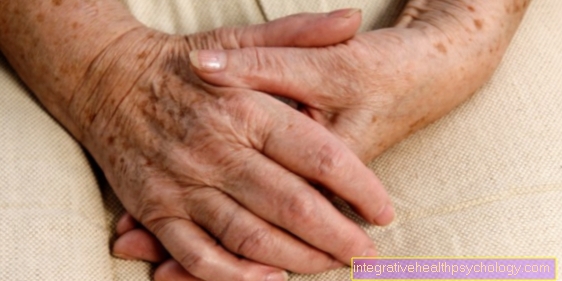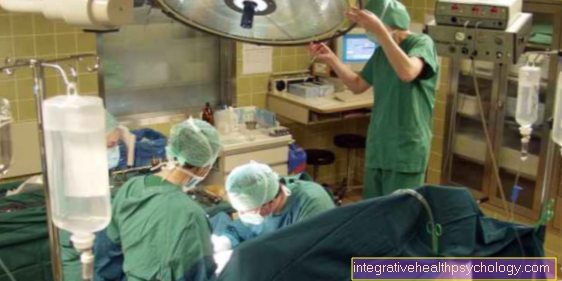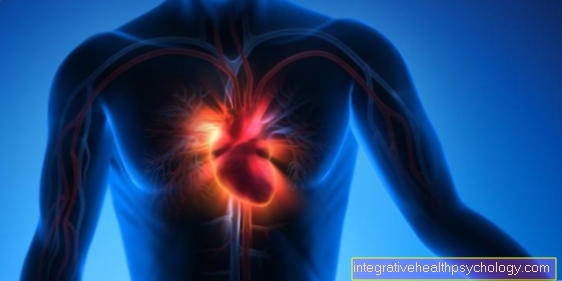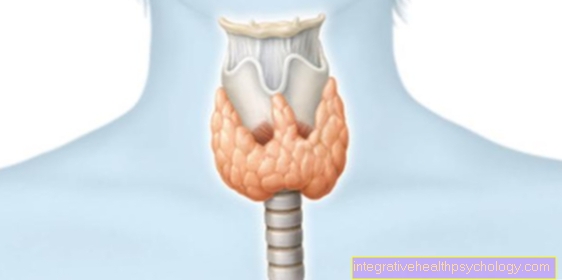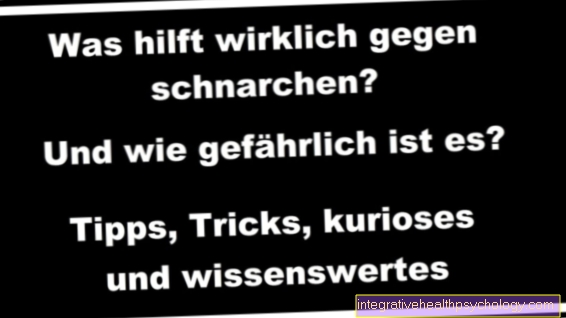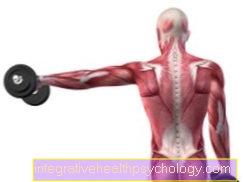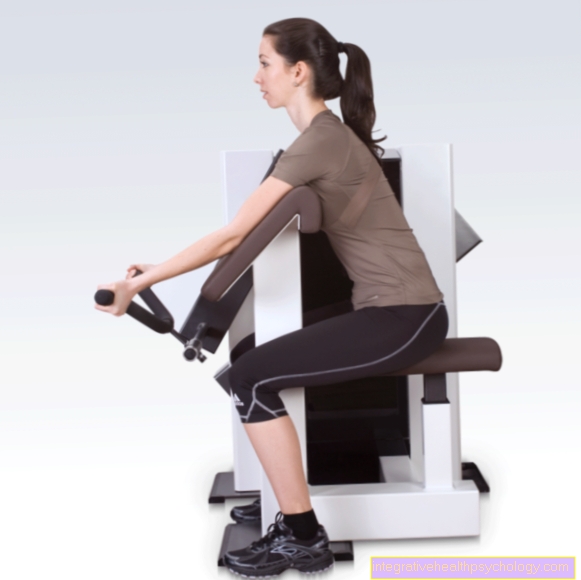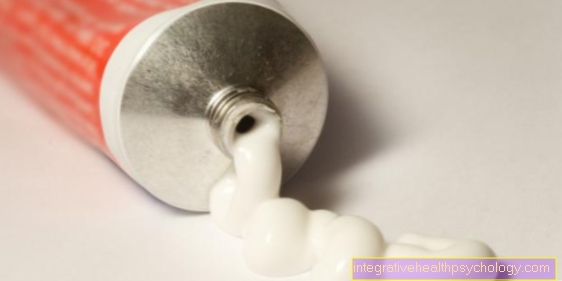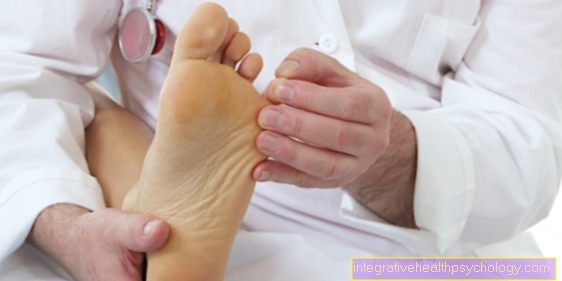jogging
Synonyms in a broader sense
Jogging, running, running, endurance sports, marathons
introduction

The number of running enthusiasts has been increasing for years. It is estimated that around 10 million people in Germany run regularly.
More and more people seem to have the need to move around their work. This is certainly due to the fact that many employees do a full-time sedentary job, with a feeling of movement congestion. However, the fact of a widening awareness of one's own state of fitness and thus one's own health is also important. Advertising plays an important role here, which the 50-plus-year-olds in particular have discovered for themselves as financially strong clients. As a new trend for this target group, walking / Nordic walking has recently become increasingly popular in the area of leisure sports.
Running is generally considered to have a health protective effect, especially awarded on the cardiovascular system. But regular headaches and depression can also be positively influenced by running.
Nevertheless, running also means straining the muscles, tendons, ligaments, bones (supporting and musculoskeletal system) with the possibility of injuring these structures. In addition to sudden injuries (accidents), which are rare when running, there are more frequent symptoms of overloading and improper strain on the musculoskeletal system.
Functional anatomy
Running represents a rhythmic and dynamic sequence of movements. The whole body is involved in the movement, with the greatest strain on the lower extremities (legs).
The rhythm of the movement can be divided into different movement phases. The strain on the musculoskeletal system differs in the individual movement phases.
When the leg comes up (front support phase), the joints and muscles of the leg have to absorb the body weight and cushion the impact. In particular, the front thigh muscles (quadriceps muscles), the calf muscles (triceps surae muscles) and the knee joint are used here.
When pushing the body off the ground (rear support phase), in an early phase there are mainly the anterior thigh muscles and the foot extensor muscles, in a later phase the calf and posterior thigh muscles (hamstring muscles) are also increasingly used.
After removing the foot from the ground, the leg is moved backwards (back swing phase). This results in a stretching of the hip joint and a flexion in the knee joint and ankle joint. The muscles required for this movement are the anterior thigh muscles (especially the rectus femoris muscle) and the anterior lower leg muscles (tibialis anterior muscle).
This is followed by leading the leg forward (front swing phase) with extension of the knee joint and preparation for the foot's emergence. The tibialis anterior muscle of the anterior lower leg muscles is particularly active during this movement phase.
With the emergence of the foot, a new cycle of movement begins with the corresponding strain on the muscles.
Read more about the topic here: Fitness training
causes

The causes of discomfort or injuries while running are diverse. Various factors need to be considered:
- Accidents
- Age
- Weight
- Training condition (endurance training)
- Body anatomy
- Running technique
- Intensity of running
- Running surface
- equipment
Accidents while jogging
Accidents while running are relatively rare. Various factors lead to an increased risk of injury:
- Uneven terrain
- Bad footwear
- Running in the dark
- Running in a group
- fatigue
- Training intensity too high
- Too fast increase in training intensity
- Bad training condition (see endurance sports)
In most cases, the lower extremity is affected (> 80%). Typical lower extremity injuries while running include:
Injuries to the ankle
Ankle injuries with damage to the ankle ligaments are very common. The main reasons are uneven ground in the terrain and a muscular and general fatigue with the development of an unclean and less dynamic running style. The consequences are a ligament strain or a torn ligament at the ankle (fibular ligament rupture) or even a fracture of the outer ankle (distal fibular fracture).
More rare are more severe ankle fractures (open fractures, bimalleolar fractures, Maissoneuve fracture), fractures of the metatarsal bones (especially the base of the 5th metatarsal bone), severe bone contusions, etc.
After a typical ankle injury, there is rapid swelling of the outer ankle region. The foot may or may not still be resilient. The extent of swelling and resilience do not allow any reliable conclusions to be drawn about the extent of the injury. Running should be interrupted in any case.
Injuries to the muscles
Common causes of muscle injuries are muscular fatigue and cold muscles. In these conditions, the muscles are particularly susceptible to injury. Muscular injuries that have not healed sufficiently tend to recur. Therefore, after a muscular injury, you should take a sufficiently long break from exercise.
Typical muscular injury patterns include pulled muscles, torn muscle fibers, and torn muscles.
The runner feels at one of the above Injuries cause sudden, sharp pain in the area of the affected muscles (often calf muscles, hamstrings). Shortly afterwards there is a spasmodic contraction of the muscles due to an increase in muscle tone.
Torn muscle fibers and tears can quickly develop a bruise (hematoma), which leads to an increase in the circumference of the affected leg. It is difficult to distinguish between a pulled muscle and a ruptured muscle fiber. Muscle tears or tears in muscle bundles may be recognized early on by a palpable dent in the muscles. However, due to the spreading hematoma, the dent may later be gone.
Running should be interrupted in any case. Stretching the injured muscles should definitely be avoided
If removed, muscle spasms can also be counted among the muscular injuries. They are usually harmless and can be attributed to an insufficient supply of minerals (electrolytes). A calf cramp is distinguished by the lack of sudden, sharp pain and is usually announced during the course of running by increasing muscle hardening.
Achilles tendon injuries
If a previously damaged Achilles tendon is pulled abruptly, it can also lead to a rupture of the Achilles tendon while running. The cause can be a step on a bump in the floor or the like. be. However, strains and chronic irritation of the Achilles tendon or its sliding tissue (achillodynia) are more common.
When the Achilles tendon ruptures, the runner feels sudden, violent pain in the area of the Achilles tendon. Sometimes he hears a loud bang. It is not uncommon for those affected to report that they initially thought they had been kicked in the calf.
In the case of a complete Achilles tendon rupture, a dent can usually be felt a little above the Achilles tendon insertion on the heel bone. The foot can either no longer be lowered to the ground, or it can only be lowered to the ground with little strength. The tip-toe stand is certainly no longer feasible.
Injuries to the upper extremity
Stumbling etc. leads to falls and consequently injuries to the upper extremity. The more common injuries include a broken spoke (distal radius fracture), a broken collarbone (clavicle fracture) and a broken rib, as well as all sorts of bruises, skin grazes, etc.
Overuse damage while running / jogging
Damage to the musculoskeletal system due to excessive strain or improper strain is far more common than accidents.
Knee joint
The knee joint is heavily used when running. If the knee joint is already damaged, as in the case of osteoarthritis of the knee (gonarthrosis), it is less resilient and tends to be irritated, which can be expressed in pain, overheating and effusion of the knee joint.
Wear-related meniscus damage (degenerative meniscus ruptures, meniscus damage) can also lead to knee joint problems. They are usually expressed in the form of pain on the inside or outside of the knee joint gap. Occasionally, there is also pain in the back of the knee. The initially only "annoying" symptoms can ultimately make walking impossible and also cause pain and swelling of the knee joint at rest. A typical accident can usually not be remembered
A very common pain symptomatology affects the kneecap (patella), which is why the kneecap pain of the runner is also known as "runner's knee" or runner's knee (tractus syndrome). The complaints are caused by cartilage damage to the kneecap and / or its sliding bearing on the thigh (chondropathia patellae) and a local inflammation of the mucous membrane. The causes for this clinical picture are diverse:
- Knock knees
- Underdevelopment of the kneecap (patellar dysplasia)
- Less training of the plain bearing
- Tight ligament guide
- Running technique (overpronation)
- Inside hip rotation
- Muscle imbalance in the muscles centering the kneecap
- Muscle shortening with increased kneecap pressure
Other forms of knee joint pain relate to overload with inflammation of the Hoffa fat body and irritation of the muscle / tendon attachments.
When Hoffa's fat body becomes inflamed, the pain is felt inside the knee joint, behind the patellar tendon. Typical is a slow, increasing pain as well as pain when the knee is extended.
Characteristic tendon attachment complaints (enthesopathy) concern the pes anserinus ("goose foot", common attachment of the sartorius muscle, gracilis muscle, semitendinosus muscle) in the area of the inner (medial) tibia head. According to their function, pain exists mainly during internal rotation of the flexed knee joint.
Read more on the subject at: Tendonitis on the shin.
Rubbing the iliotibial tract can cause pain in the area of the lateral knee joint. The iliotibial band is a planar reinforcement of the muscle covering of the thigh (fascia lata). It is tensioned by the muscle fibers of the tensor fascie latae muscle and the gluteus maximus muscle. The iliotibial tract runs as a path along the lateral thigh to the lateral tibial head. Rubbing this tract in the area of the lateral knee joint can lead to discomfort and the formation of inflammatory bursa when running. A bow leg deformity favors the occurrence of this clinical picture.
Foot / ankle
The foot has the most direct contact with the ground when running. The steps are only cushioned by the footwear. Thus, the structures of the foot are exposed to heavy loads. Misalignments of the foot or the ankle joint with unnatural foot / ankle stress therefore quickly lead to overuse complaints.
Splayfoot describes a pathological lowering of the transverse arch of the foot and leads to forefoot pain due to overloading of the metatarsal heads II-IV, which can be easily treated with appropriate insoles. It is also responsible for the formation of hammer and claw toes, which lead to sore corns (clavus).
The arched foot leads to a flattening of the inner arch of the foot with overload and pain in the small foot muscles in this area. A painful heel spur can develop through chronic tensile stress on the plantar fascia. The treatment of choice for calcaneal spurs is also here the treatment of insoles.
Hallux valgus is a misalignment of the big toe and is usually associated with a splayfoot. In hallux valgus, the big toe increasingly points outwards. The misalignment and a wide forefoot lead to a painful bursitis in the area of the metatarsophalangeal joint of the big toe.
Increasing walking, especially with a forefoot runner (see below), can accelerate osteoarthritis of the big toe (hallux rigidus) or become symptomatic. With hallux rigidus, the unrolling of the forefoot is disturbed because the big toe is hindered in its erection due to wear.
Fatigue fractures (stress fractures) are particularly common in the metatarsal area. But they can also affect the fibula, the tibia, the femoral neck or the pelvis (usually the pubic branch). The cause is always a disproportion between the load (hard training) and the resilience of the bone. Very slender women with poor bone metabolism (osteoporosis) and extreme running loads (e.g. marathon) are more often affected. In recreational sports, fatigue breaks are rare.
Overstressing the ankle joint leads to inflammation of the mucous membrane, ankle pain and effusion of the joint, especially if the ankle is unstable.
Complaints and swellings in the area of the outer ankle that are not caused by an accident can be caused by a constitutional dislocation of the peroneal tendon (peroneal tendon dislocation) or partial dislocation (lateral calf muscles). It is a rare disease. The cause is a flat tendon sliding bed and weak ligament guidance of the peroneal tendons on their way from the outer ankle to the foot.
Achilles tendon
Achilles tendon pain is very common. An axial misalignment of the foot / ankle joint (arched arched foot), overpronation while running (see below), incorrect footwear, uneven ground (especially walking in sand), shortened calf muscles, leg length differences, etc. can be causes of the complaints. The term achillodynia is used as a collective term for pain in the Achilles tendon area.
A distinction must be made between a “real” inflammation of the Achilles tendon (tendinopathy) and inflammation of the tendon sliding tissue (peritendinitis achillae). Strictly speaking, however, it is not an inflammation but rather a wear-related aging of the Achilles tendon (degeneration). Partial tears of the Achilles tendon occur and can ultimately lead to a complete rupture.
The localization of the complaint is usually 5 cm above the Achilles tendon attachment on the heel bone. The Achilles tendon can be swollen there, which is best seen on ultrasound. An accumulation of fluid around the Achilles tendon is indicative of inflammation of the tendon sliding tissue.
Morning start-up pain or pain at the beginning of running are characteristic. After warming up, the symptoms improve, only to increase in intensity after prolonged exercise.
Other possibilities for pain in the Achilles tendon are bursitis at the attachment point of the Achilles tendon. The superficial inflammation of the bursa between the skin and the Achilles tendon is usually caused by poorly fitting shoes that rub or chafe.
The deep bursitis affects the bursa between the Achilles tendon and the heel bone (calcaneus) and is usually caused by an anatomical variant of the heel bone (Haglund's exostosis).
hip
In contrast to the above Areas of complaint are relatively seldom overuse pain or pain in the hip area. In a broader sense, all pelvic tendon insertion problems can be included in this. Tendon insertion complaints of the adductor muscles are known, i.e. the muscle group that is responsible for spreading the legs. They start at the pubic and ischium and develop their complaints there too (deep groin, ischial bones).
Also read on this topic: Ischial tuberosity pain
In the same way, there are tendon insertion complaints of the abductor muscles, i.e. the muscle group that is responsible for spreading the legs (especially the gluteal muscles). Stress-dependent pain and pressure pain can be triggered in the area of the "hip bone" (greater trochanter).The “hip bone” can be felt well in depth on the lateral upper thigh. More information can be found here: Greater trochanter pain
A distinction must be made between this and the clinical picture of trochanteric bursitis. This is a bursitis over the hip bone. When the leg moves, the runner feels painful rubbing. There is considerable pain on pressure over the hip bone.
Coxa saltans is also a disease that occurs in the area of the greater trochanter. The disease is characterized by a jerky, painful snap of the iliotibial tract over the greater trochanter. This is why one speaks of a "snapping hip". The cause of this problem is to be found in a congenitally prominent greater trochanter, a leg length difference or a general weakness of the connective tissue.
As with knee osteoarthritis, hip osteoarthritis (coxarthrosis) can also lead to pain in older runners.
Also read: Correct breathing when jogging
Spine
Back pain occur occasionally while running. The lumbosacral junction (transition from the Lumbar spine to the Sacrum exposed. By a poorly developed back and Abdominal muscles and a shortened hip flexor muscles tilt the pelvis forward.
This is offset by an increased Lumbar lordosis (Formation of a hollow back) with overloading the Band washers and the small vertebral joints. Well trained runners feel the same way when they are muscular fatigue.
The consequences can be facet arthrosis and herniated discs, especially in the lumbar spine area.
Please also read our topic: Jog despite a herniated disc
Overuse complaints from running technique while jogging
Forms of overload damage
- Overpronation
- Over-supination
- Forefoot runner
- Heel runner
Overpronation
A Overpronation In simple terms, describes one Running style, in which the foot adopts an unnatural position that places increased stress on the inner edge of the foot and, as a result, the entire leg rotates internally during the support phase of running. This results in unnatural pressure and tensile loads on various structures.
Discomfort can occur in the area of the foot (plantar fasciitis, overload of the Metatarsophalangeal joint, Morton's neuroma, stress fracture of the metatarsal bones), the Achilles tendon (achillodynia), the lower leg (Muscle aches on the inner edge of the tibia) and the knee joint (chondropathia patellae).
Supination
A Supination In simple terms, describes a running style in which the outer edge of the foot is increasingly stressed in the support phase of running. The foot does not roll evenly. Symptoms mainly occur in the area of the lateral foot (pressure pain, stress fractures of the metatarsal bones), the lower leg (calf pain) and the lateral knee joint (rubbing of the Iliotibial band, Bursitis).
Forefoot runner
Forefoot runner run leaning forward and put more strain on the forefoot. The normal rolling of the foot is disturbed. Walking forefoot overloads the toes, especially the metatarsophalangeal joint of the big toe, as well as the metatarsal bones and the calf muscles
Heel runner
Of the Heel runner describes the other extreme. The heel and the anterior lower leg muscles (tibialis anterior muscle) are exposed to particular stress. Complaints in these areas are typical.






.jpg)
